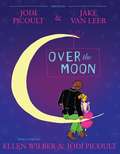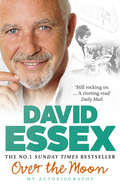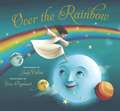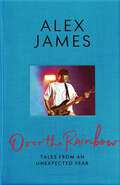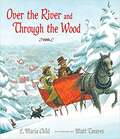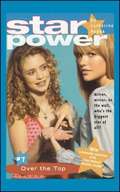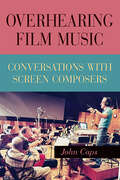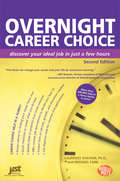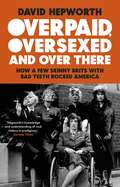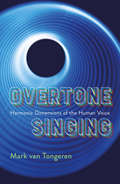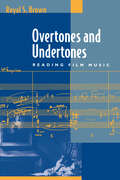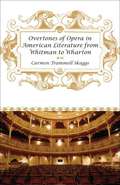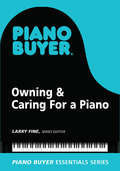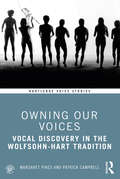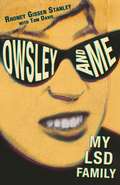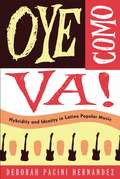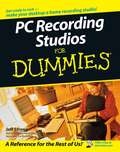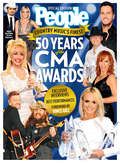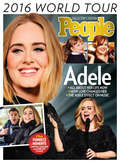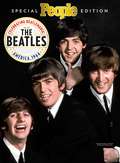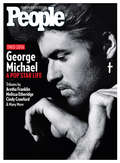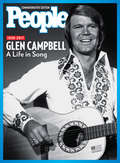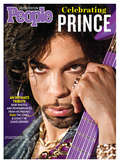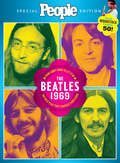- Table View
- List View
Over the Moon
by Jodi Picoult Jake Van Leer Ellen WilberMaster storyteller and bestselling author Jodi Picoult teams up with Jake van Leer and Ellen Wilber to bring you an original musical, sure to breathe life into any middle-school and high school drama curriculum. Part Shakespearean comedy and part Fractured Fairy Tales, Over the Moon is all fun. Narrated by a cross-dressing Hairy Godmother (no, that's not a typo), the story begins when Luna (the moon) descends to a small town on earth disguised as a boy, and sets out to help humans find love. But Luna herself falls in love with Prince Jack... who's in love with Felicity... who has fallen for Luna. On the way to happily ever after are a steady stream of clever puns and topical jokes about American Idol, universal health care, Bernie Madoff, and just about every fairy tale creature you've ever heard of! With nineteen original hum-worthy songs and plenty of spots to tailor the play to any city or town, Over the Moon is the perfect choice for every school looking to perform an energetic show that's fresh, funny, and timeless.
Over the Moon: My Autobiography
by David EssexAs a young schoolboy, David Essex dreamed of becoming a professional footballer, and was signed up by his beloved West Ham United, but as a teenager he developed a passion for music which set him on a very different path, and ultimately led to superstardom.It wasn't, however, an easy start. Scraping a living on the edges of show business was a hard slog, and he endured many disappointments. Then aged 23, he went along to an audition for a new musical called Godspell and won the role of Jesus that was to shoot him to fame. Within a year he was starring in the smash hit film, That'll Be the Day, and had written and recorded his first number one single 'Rock On'.It was the start of Essex Mania, and a long journey of undreamt of adventure. From Godspell to EastEnders it's been an amazing life. And here is David's full incredible story – in his own words.
Over the Rainbow
by Harold Arlen E. Y. HarburgTake a magical journey over the rainbow . . . No song has created more memories and magic for children of all ages than Harold Arlen and E.Y. Harburg's "Over the Rainbow." Now, this classic has been transformed for a new generation. So get ready to soar where happy little bluebirds fly and the dreams that you dare to dream really do come true. Acclaimed painter Eric Puybaret has conjured up a marvelous fantasy that will transport you from a little red farmhouse, to castles high in the clouds, to wherever your imagination wants to go.
Over the Rainbow: Tales from an Unexpected Year
by Alex JamesA raucous, behind-the-scenes account of the year Blur got back togetherThere is nothing that can touch the sound made by a close-knit group of people who have been playing together for years and years and years, playing as though their lives depended on it. For many years, all our lives did, and actually, I’d suddenly realised, they did still.One winter’s night, Alex James received an unexpected call. Blur had been invited to play their biggest gig ever: Wembley Stadium. The only trouble was, he and his bandmates hadn’t spoken to – or even shouted at – each other for years. And he now had five children, an out-of-control menagerie of cats, and a sprawling farm to run.This is the story of what happened next. Taking us behind the scenes of a raucous, rollercoaster year, Alex describes how the band made a surprise – and emotional – return, recording an acclaimed album and playing sold-out shows around the world, from Colchester to Colombia and beyond. Plus: how he went on a crash diet to fit back into his ‘Britpop Trousers,’ somehow organised an entire festival of his own, and tried to perfect the recipe for a giant Frazzle. Over the Rainbow is a heartfelt and hilarious account of what it feels like to be catapulted back into the limelight with one of the world’s biggest bands. It is a love letter to Blur, to friendship and to music. And it shows us all that, however old – or hungover – we might feel, nothing’s ever truly over: it’s always just the start of the next thing.
Over the River and Through the Wood: A Thanksgiving Poem
by Lydia Maria ChildOver the river and through the wood, To Grandfather's house we go . . . FOR NEARLY 150 YEARS the words of Lydia Maria Child's Thanksgiving poem have been as essential a part of the traditional holiday celebration as turkey and pumpkin pie.
Over the Top (Star Power)
by Catherine HapkaCan the answer to Star's dreams be found in a crystal ball? Star and her team attend an industry event in London, where they run into Jade, Eddie Urbane, and his latest girlfriend, New Age guru Xandra. When Xandra says she's psychic and gives Star some shocking news about Star's parents, Star isn't sure what to believe -- after all, with Eddie around, trouble is never far behind! Still, Star can't resist following up just in case. To get to the bottom of things, she goes to the most unlikely person for help -- and the results are more shocking than Star could have imagined.
Overhearing Film Music: Conversations with Screen Composers (SUNY series, Horizons of Cinema)
by John CapsBeginning with a quick history of film scoring and then taking the reader backstage to interview a dozen major screen composers, Overhearing Film Music represents three generations of movie soundtrack music. Ranging from groundbreaking composers who scored classic 1940s melodramas such as Laura and the Thief of Bagdad, to the jazz-influenced modernists who worked on Rebel Without a Cause and The Pink Panther, and into the symphonic renaissance represented by films like Star Wars and Harry Potter, Caps asks the seminal questions: How did this kind of active movie scoring evolve from silent films—and where is it headed? These interviews provide a master class in how and why to score a film. Interspersed among the interviews, Caps's single-subject essays provide concise histories of the use of choral music in films, African American and female film composers, and digital composing software for a new era.
Overnight Career Choice
by Michael Farr Laurence ShatkinThis book provides more than 275 job descriptions with information on each job's pay, growth, openings, education level, and skills needed. Additional information about major industries opens readers' eyes to different sectors where they may be able to build a rewarding career.
Overpaid, Oversexed and Over There: How a Few Skinny Brits with Bad Teeth Rocked America
by David HepworthThe Beatles landing in New York in February 1964 was the opening shot in a cultural revolution nobody predicted. Suddenly the youth of the richest, most powerful nation on earth was trying to emulate the music, manners and the modes of a rainy island that had recently fallen on hard times.The resulting fusion of American can-do and British fuck-you didn’t just lead to rock and roll’s most resonant music. It ushered in a golden era when a generation of kids born in ration card Britain, who had grown up with their nose pressed against the window of America’s plenty, were invited to wallow in their big neighbour’s largesse.It deals with a time when everything that was being done - from the Beatles playing Shea Stadium to the Rolling Stones at Altamont, from the Who performing their rock opera at the Metropolitan Opera House to David Bowie touching down in the USA for the first time with a couple of gowns in his luggage - was being done for the very first time.Rock and roll would never be quite so exciting again.
Overtone Singing: Harmonic Dimensions of the Human Voice
by Mark Van TongerenAn indispensable guide to a deeper understanding of the nature of the human voice and its harmonic possibilities from East to West.Overtone Singing is the most comprehensive book ever written on the hidden harmonies of the human voice. Ethnomusicologist and vocalist Mark van Tongeren offers fascinating insights into the timeless and universal aspects of sound and vibration. Grounded in the author&’s decade-long study of Asian music, the book draws upon field work, interviews with Eastern and Western musicians, and copious scholarship to present a multidisciplinary vision of sound that runs from global music to the science of acoustics and perception, onward to the philosophical and spiritual dimensions of music. Written in a nontechnical style, this generously illustrated book is an indispensable guide for musicians, listeners, and performers seeking a deeper understanding of the nature of the human voice and its harmonic possibilities from East to West.
Overtones and Undertones: Reading Film Music
by Royal S. BrownSince the days of silent films, music has been integral to the cinematic experience, serving, variously, to allay audiences' fears of the dark and to heighten a film's emotional impact. Yet viewers are often unaware of its presence. In this bold, insightful book, film and music scholar and critic Royal S. Brown invites readers not only to "hear" the film score, but to understand it in relation to what they "see."Unlike earlier books, which offered historical, technical, and sociopolitical analyses, Overtones and Undertones draws on film, music, and narrative theory to provide the first comprehensive aesthetics of film music. Focusing on how the film/score interaction influences our response to cinematic situations, Brown traces the history of film music from its beginnings, covering both American and European cinema. At the heart of his book are close readings of several of the best film/score interactions, including Psycho, Laura, The Sea Hawk, Double Indemnity, and Pierrot le Fou. In revealing interviews with Bernard Herrmann, Miklós Rósza, Henry Mancini, and others, Brown also allows the composers to speak for themselves. A complete discography and bibliography conclude the volume.
Overtones of Opera in American Literature from Whitman to Wharton
by Carmen Trammell SkaggsIn this captivating work, Carmen Trammell Skaggs examines the discourse of opera -- both the art form and the social institution -- in nineteenth- and early twentieth-century American literature. Through the lens of opera, she maintains, major American writers -- including Walt Whitman, Edgar Allan Poe, Louisa May Alcott, Kate Chopin, Willa Cather, Henry James, and Edith Wharton -- captured the transformations of a rapidly changing American literary landscape. Although they turned to opera for different reasons, they all saw a twofold function in the art form: a means of expressing a private aesthetic experience and a space in which to perform highly ritualized social functions.Skaggs opens with an exploration of Whitman, who believed that the opera singer infuses ordinary speech with an element of the divine. Through his poetry, he sought to transform these sacred intonations into vehicles of an artistic transcendence that could be experienced by his audience. Skaggs then turns to Poe and Alcott, who frequently imitated the excesses of opera in their fiction, flamboyantly enjoying the element of the absurd. Using opera as a setting in their work allowed them to explore the fallibility of human sensibility, especially our susceptibility to deception.Chopin and Cather, Skaggs shows, empowered their heroines with a voice, a medium for artistic transcendence, but they were also influenced by the growing popularity of Wagnerian opera -- and of the idea that only through a sublimation of life can transfiguration of the soul occur. The true artist, they believed, inevitably lived a solitary life, sacrificing all for art. In the diva, for instance, Cather saw the ideal embodiment of the female artist. On the other hand, James and Wharton, Skaggs explains, recognized the opera box as the ideal setting for social considerations of class, codes, and customs in many of their stories and novels. Past literary critics have employed musical terminology to evoke what opera historian Herbert Lindenberger describes as a "nonverbal dimension beyond what we ordinarily take to be the realm of literature," but many of these same scholars warily embraced an operatic approach. After all, the "operatic" often suggests artificiality and extravagance -- qualities usually seen as negative in writing. Despite the undisputed canonical status of many of the works Skaggs explores, at least a few of them might also be described in similarly operatic (and disparaging) terms. The critical discourse of opera, however, offers an ideal vehicle for opening these texts in a new way.Unveiling a heretofore seldom-noticed connection between the rise of opera in America and the flowering of American literature, Skaggs's noteworthy study will inform and enlighten literary scholars, musicologists, and lovers of both opera and literature.
Overture of Hope: Two Sisters' Daring Plan that Saved Opera's Jewish Stars from the Third Reich
by Isabel VincentSchindler's List meets The Sound of Music as best-selling New York Post investigative journalist Isabel Vincent delves into pre-World-War-II history to recover the amazing story of two British spinsters who masterminded a plan to spirit dozens of Jewish stars and personnel of the German and Austrian opera to England and save them from a terrible fate under the Third Reich. Will resonate with readers of The Nazi Officer's Wife and The Dressmakers of Auschwitz.A Secret Aria of Courage and Suspense Europe, 1937. Two British sisters, one a dowdy typist, the other a soon-to-be famous romance novelist. One shared passion for opera. With prospects for marriage and families of their own cut down by the scythe of World War I, the Cook sisters have thrown themselves into their love of music, with frequent pilgrimages to Germany and Austria to see their favorite opera stars perform. But now with war clouds gathering and harassment increasing, the stars of Continental opera, many of whom are Jewish, face dark futures under the boot heel of the Nazis. What can two middle-aged British spinsters do about such matters? They can form a secret cabal right under Hitler's nose and get to work saving lives. Along with Austrian conductor Clemens Krauss (a favorite of Hitler, but quietly working with the Cooks) the sisters conspire to bring together worldwide opera aficionados and insiders in an international operation to rescue Jews in the opera from the horrific fate that everyone intuits is coming. By the time war does arrive, the Cooks and their operatives have plucked over two dozen Jewish men and women from the looming maw of the Holocaust and spirited them to safety in England. Packed with original research and vividly told with suspense, hope, and wonder by award-winning New York Post investigative journalist Isabel Vincent, author of nationally best-selling memoir Dinner with Edward, this singular tale reveals many new details of the seemingly naïve and oblivious Cook sisters' surreptitious bravery, daring, and passionate commitment as the two mount a successful rescue mission that saves dozens of lives and preserves the opera they love for another generation. &“A profoundly moving history of vision, courage, love and commitment.&”—Blanche Wiesen Cook, author of national bestseller Eleanor Roosevelt "A riveting, improbable, uplifting tale, made all the more exciting because it really happened!&”—Opera great and 17-time Grammy Award winner Renée Fleming
Owning & Caring For a Piano
by Larry FineThe Piano Buyer Essentials SeriesThe Piano Buyer Essentials Series brings together in one place the very best and most important articles from our 30 years of publishing on the subject of buying and owning a piano. Each e-book is a compilation of articles from current and past issues of Acoustic & Digital Piano Buyer, a semiannual consumer publication devoted to the purchase of new, used, and restored acoustic pianos and digital pianos. The e-books may also contain excerpts from The Piano Book, by Larry Fine, and from pieces published only on PianoBuyer.com. For reader convenience, articles and excerpts have been grouped by subject. However, because some pieces apply to more than one subject, there is some duplication of articles among the e-books in the series.
Owning Our Voices: Vocal Discovery in the Wolfsohn-Hart Tradition (Routledge Voice Studies)
by Patrick Campbell Margaret PikesOwning Our Voices offers a unique, first-hand account of working within the Wolfsohn-Hart tradition of extended voice work by Margaret Pikes, an acclaimed voice teacher and founder member of the Roy Hart Theatre. This dynamic publication fuses Pikes’ personal account of her own vocal journey as a woman within this, at times, male-dominated tradition, alongside an overview of her particular pedagogical approach to voice work, and is accompanied by digital footage of Pikes at work in the studio with artist-collaborators and written descriptions of scenarios for teaching. For the first time, Margaret Pikes’ uniquely holistic approach to developing the expressive voice through sounding, speech, song and movement has been documented in text and on film, offering readers an introduction to both the philosophy and the practice of Wolfsohn-Hart voice work. Owning Our Voices is a vital book for scholars and students of voice studies and practitioners of vocal performance: it represents a synthesis of a life’s work exploring the expressive potential of the human voice, illuminating an important lineage of vocal training, which remains influential to this day.
Owsley and Me
by Tom Davis Rhoney Gissen StanleyOwsley and Me is a love story set against the background of the Psychedelic Revolution of the '60s. Owsley "Bear" Stanley met her in Berkeley in 1965, when LSD was still legal and he was the world's largest producer and distributor of LSD. Rhoney found herself working in an LSD laboratory, and the third corner in a love triangle. We all know the stories from the '60s-but never from the point of view of a woman finding her way through twisted trails of love, jealousy, and paranoia, all the while personally connecting to the most iconic events and people of her time.Bear supported the Grateful Dead in their early years and gave away as much LSD as he sold-millions of hits. He designed and engineered the infamous Wall of Sound system of the early '70s, just before he began his two years in prison, with Rhoney raising their infant son. He died one year ago, but the era he helped create is now being rediscovered by a new generation interested in the meaning of it all.Today Rhoney Stanley is a practicing holistic orthodontist in Woodstock, New York. This is her first book.Tom Davis was an Emmy Award-winning American writer and comedian. He is best known for being one of the original writers for Saturday Night Live and for his former partnership with Al Franken, as half of the comedy duo "Franken & Davis." His memoir Thirty-Nine Years of Short-Term Memory Loss: The Early Days of SNL from Someone Who Was There was published in 2010 by Grove Press.
Oye Como Va!: Hybridity and Identity in Latino Popular Music
by Hernandez Deborah PaciniListen Up! When the New York-born Tito Puente composed "Oye Como Va!" in the 1960s, his popular song was called "Latin" even though it was a fusion of Afro-Cuban and New York Latino musical influences. A decade later, Carlos Santana, a Mexican immigrant, blended Puente’s tune with rock and roll, which brought it to the attention of national audiences. Like Puente and Santana, Latino/a musicians have always blended musics from their homelands with other sounds in our multicultural society, challenging ideas of what "Latin" music is or ought to be. Waves of immigrants further complicate the picture as they continue to bring their distinctive musical styles to the U. S. -from merengue and bachata to cumbia and reggaeton. In Oye Como Va!, Deborah Pacini Hernandez traces the trajectories of various U. S. Latino musical forms in a globalizing world, examining how the blending of Latin music reflects Latino/a American lives connecting across nations. Exploring the simultaneously powerful, vexing, and stimulating relationship between hybridity, music, and identity, Oye Como Va! asserts that this potent combination is a signature of the U. S. Latino/a experience.
PC Recording Studios For Dummies
by Jeff StrongHere's how to make sound decisions about a desktop studioGet the lowdown on equipment, design your studio space, and set your music free!If you've been dreaming of making music with your computer, wake up and get started! Musician Jeff Strong clears a path for you through all the confusing options, helping you sort out hardware and software choices, coax the sound you want from your equipment, work with equalizers and processors, and start your creative juices flowing!Discover how to* Choose the right system and install software* Optimize studio sound for recording and mixing* Understand audio interfaces, sound cards, and MIDI gear* Compare popular programs* Mix and master your tracks
PEOPLE 50 Years of the CMA Awards: Country Music's Finest
by The Editors of PEOPLEPEOPLE presents a special on 50 years of the Country Music Awards.
PEOPLE Adele: 2016 World Tour
by The Editors of PEOPLEHello, It's Adele! The London-native does not need an introduction, but certainly deserves one. With accolades including multiple Grammy Awards, Golden Globes, and an Academy Award, being named "Artist of the Year" by Billboard and being recognized as one of Time's most influential people, Adele has become one of the most respected artists in the world. Inspired by legends such as the Spice Girls, Madonna, Etta James, Ella Fitzgerald and more, discover how Adele has chased her dream--from 19 to 21 to 25--and found her own voice, soaring from hometown hero to global sensation.In the all-new, special collector's edition from People, Adele: 2016 World Tour, discover how Adele rose to stardom--from Tottenham to the big stage. Get an exclusive inside peek at the summer's hottest tour as well as a rare look inside her family, her style transformation, and the inspiration behind some of her greatest hits. With her heartwarming charm, natural sense of humor, and unparalleled talent, Adele is a one-woman showstopper that has changed the music industry and the world forever.
PEOPLE Celebrating Beatlemania
by The Editors of PEOPLEPeople Magazine presents Celebrating Beatlemania.
PEOPLE George Michael: A Pop Star Life
by The Editors of PEOPLEWith glorious, rarely seen photos and new interviews with Aretha Franklin, Cindy Crawford, Melissa Etheridge and remembrances from many other famous friends, this People commemorative edition celebrates the unparalleled life and career of George Michael (1963-2016). From his early years as a teen songwriter with Wham! to his incredible solo success with hits like "Faith" and "Freedom '90." A must for fans!
PEOPLE Glen Campbell: A Life In Song, 1936-2017
by The Editors of PEOPLEMemories of a music legendYou know the voice, you know the songs: from "Rhinestone Cowboy," "Gentle on My Mind," "Wichita Lineman," "By the Time I Get to Phoenix" and more, the music of Glen Campbell touched so many American lives. The extraordinary musician and showman sold more than 45 million records over a six-decade career that included a stint as a Beach Boy. He inspired us with his courageous battle with Alzheimer's, selling out arena after arena even as he fought off the disease. Now you can remember the star and hitmaker with a new special edition from PEOPLE, Glen Campbell: A Life in Song. This beautiful tribute is packed with photographs and rich storytelling from throughout Campbell's life and little-known personal history, as well as great stories and highlights from his Grammy-studded career and wild relationship with country star Tanya Tucker. Beloved as a guitarist, singer, TV star and actor, Campbell overcame drug and alcohol addiction to triumph musically and personally again and again.
PEOPLE Prince
by The Editors of PEOPLEThe editors of PEOPLE Magazine present Prince for PEOPLE Prince.
PEOPLE The Beatles 1969
by The Editors of PEOPLEThe editors of PEOPLE Magazine present PEOPLE The Beatles 1969.
